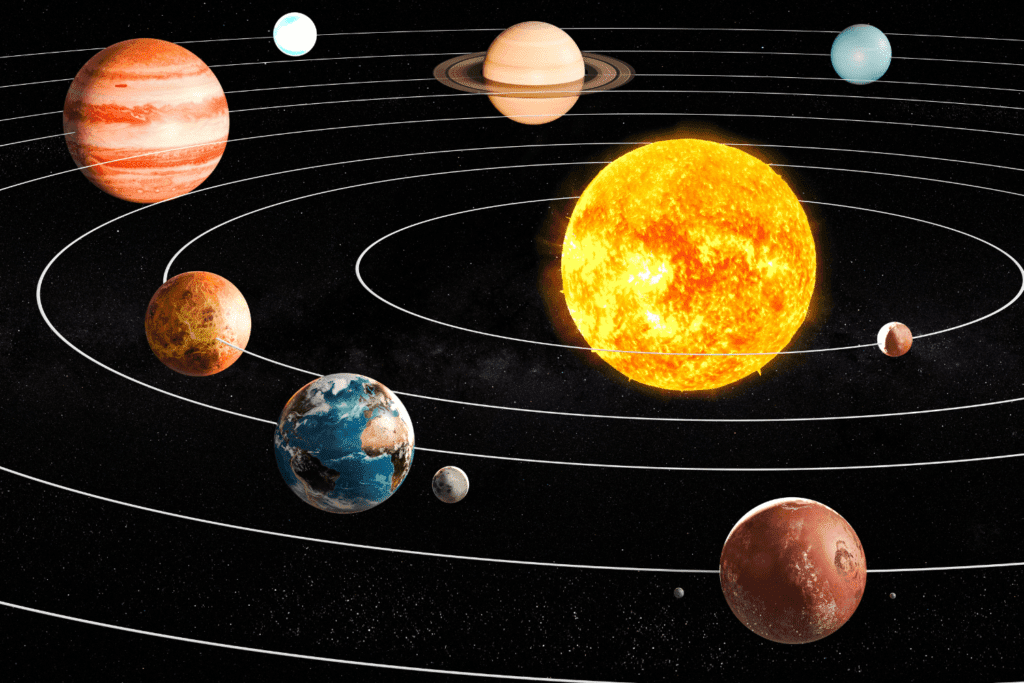This post contains affiliate links, meaning, at no additional cost to you, if you click through and make a purchase, I may receive a commission. I only share items that I truly love and use myself. For more information please see my disclosures here.
Be sure to listen to the
She’s Got It Together Podcast!
As a mom of a teenager, keeping up with their social media habits can be challenging. Snapchat, a widely used messaging app among teens, offers a subscription plan called Snapchat Plus, which provides access to exclusive and experimental features. One of the standout features of this plan is the Friend Solar System, allowing users to visualize and rank their closest friends in an interactive and engaging way. This feature is accessible only on iOS and Android devices. Read on to learn about the Snapchat planets, their order, and what they signify, as well as how your teen can see their ranking in a friend’s solar system.
What is the Friend Solar System on Snapchat?
Snapchat’s Friend Solar System is a creative way for teens to see who their closest friends are on the platform. In this system, your teen is represented as the Sun, and their best friends are depicted as the surrounding planets. For example, the first planet, Mercury, signifies the friend they interact with the most through messages and streaks.
There are eight planets in this virtual solar system, each representing a different level of closeness. Venus signifies their second-best friend, and the sequence continues to Neptune, which represents their eighth-best friend. This unique feature allows teens to visualize their social circles in a playful and engaging manner.

Understanding the Snapchat Friend Solar System and Planet Order
The planets in Snapchat’s Friend Solar System are arranged similarly to our real solar system. Here’s an overview of each planet and its significance:
- Mercury: Symbolizes the closest friend on Snapchat. This friend is the one your teen chats with and sends snaps to the most, often represented with several red hearts.
- Venus: Represents the second-closest friend, adorned with pink, yellow, and blue hearts. Increased interaction with this friend might elevate their status to Mercury.
- Earth: The third-best friend, distinguished by a natural satellite (the Moon).
- Mars: The fourth-closest friend, shown as a red planet surrounded by stars and heart emojis in blue and purple.
- Jupiter: The fifth-best friend, illustrated as an orange planet with red tints.
- Saturn: The sixth-closest friend, recognizable by its gold ring.
- Uranus: The seventh-closest friend, depicted as a green globe with fewer stars.
- Neptune: The eighth-best friend. Being represented as Neptune in a friend’s solar system might not be as exciting.
Each teen’s Snapchat solar system is unique and private, visible only to them.
How to Check Your Position in a Friend’s Solar System
While your teen can’t view another user’s complete solar system, they can see if they are one of the planets in a friend’s solar system. Here’s how:
- Open Snapchat and go to their friend’s profile.
- Tap the Best Friends or Friends badge to see their position in their friend’s solar system.
For instance, if it shows Mars, it means your teen is the fourth-best friend of that person on Snapchat. The Best Friends badge indicates mutual presence in each other’s solar system, while the Friends badge means your teen is in their friend’s solar system, but not the other way around.

Enhancing Connections with Snapchat+
The Friend Solar System is one of the exclusive features available to Snapchat Plus subscribers. This subscription continues to evolve, offering new ways for teens to engage with their friends. With Snapchat now available on desktops, teens can keep their conversations going and maintain their close friendships from any device.
Understanding these features can help moms navigate their teen’s social media use and facilitate conversations about online interactions. Snapchat’s Friend Solar System is a fun tool that also provides a way for teens to reflect on their social connections.


